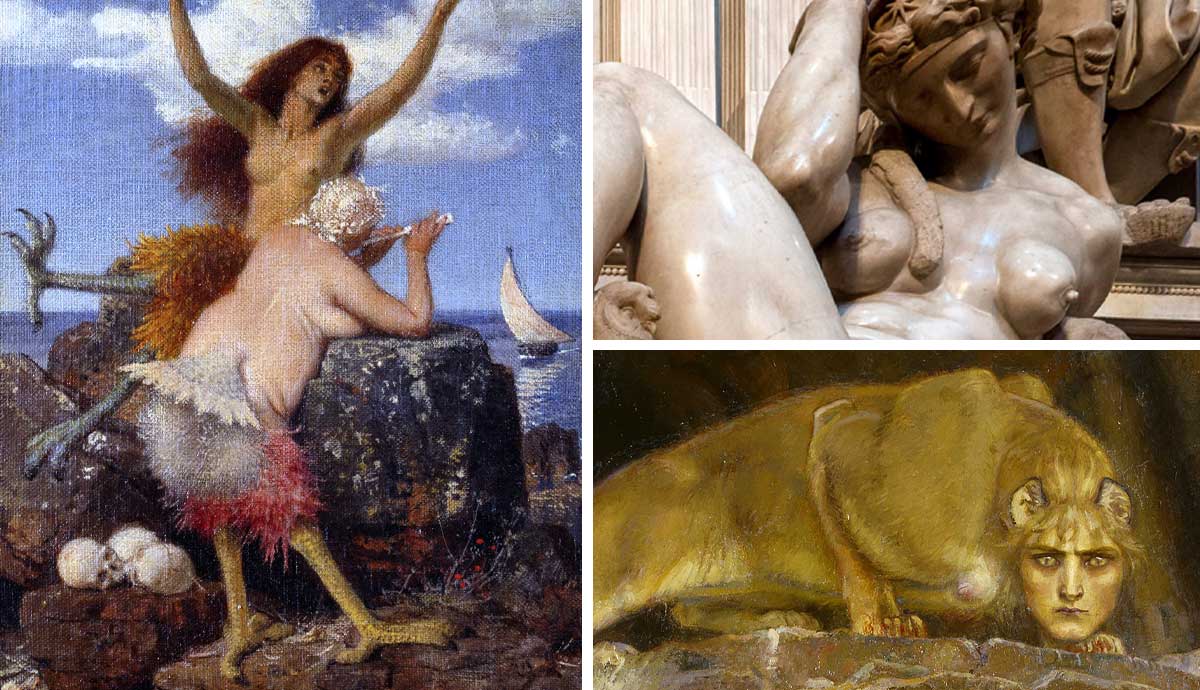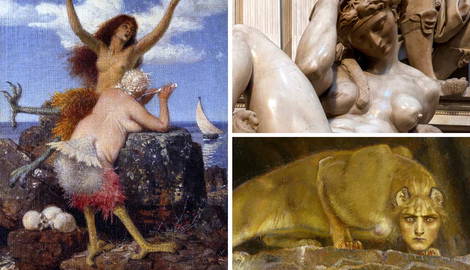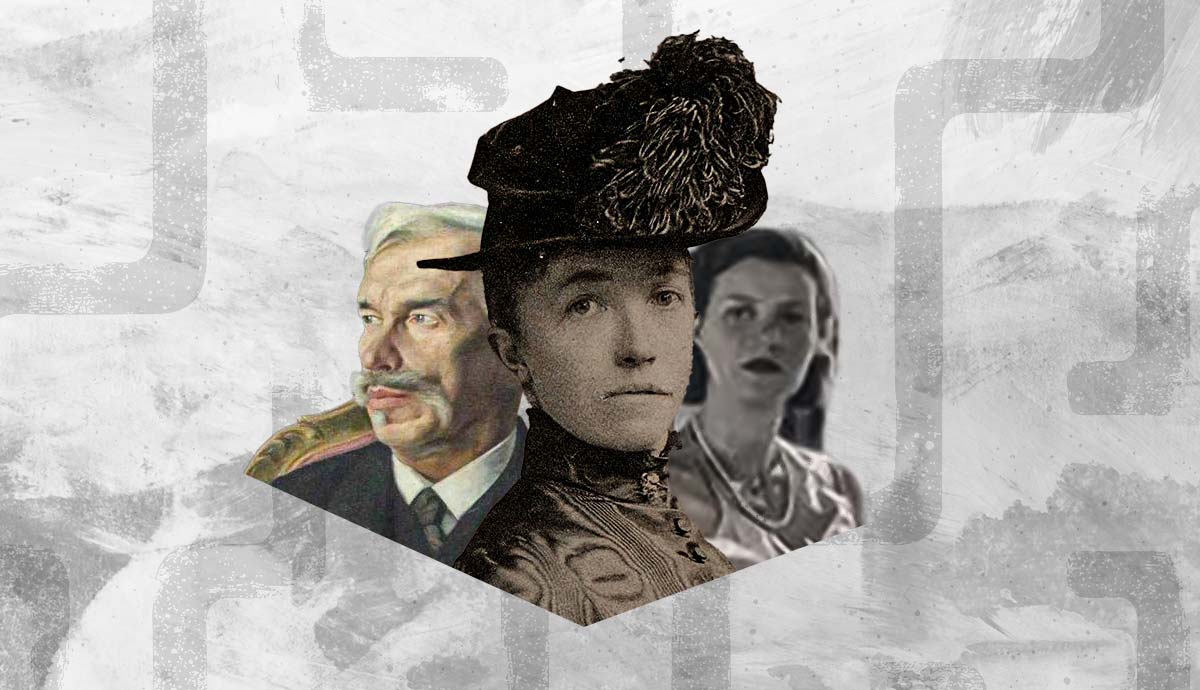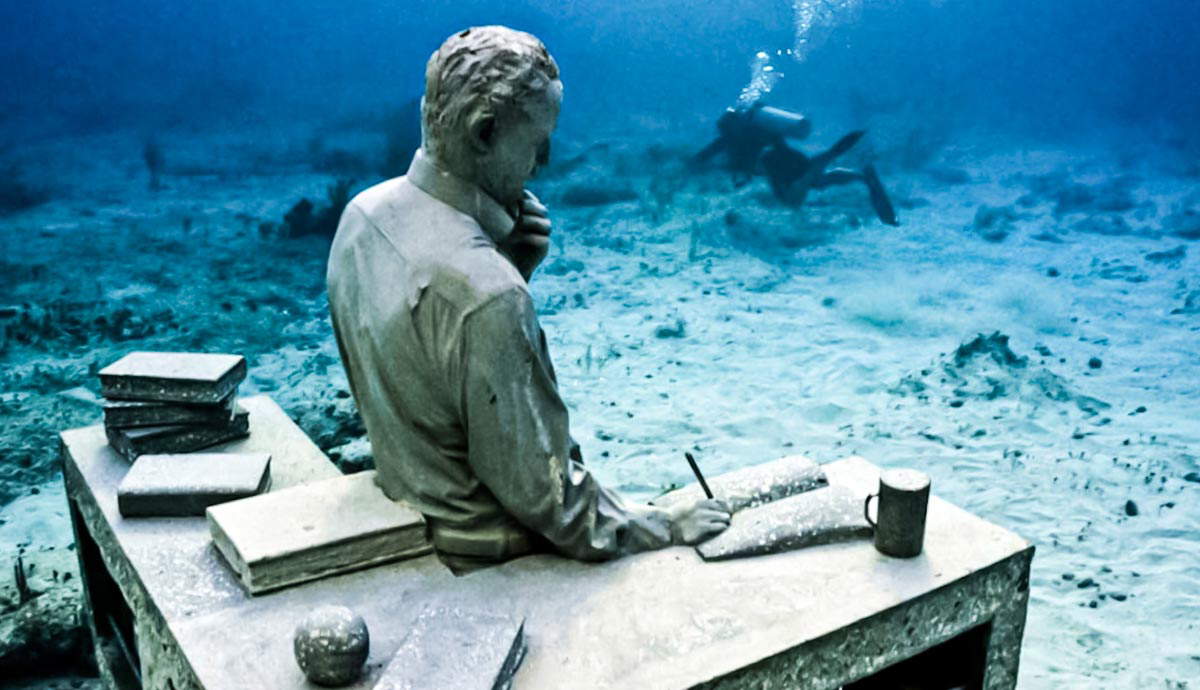
Hearing a name of a renowned painter or sculptor of any kind will immediately make you think of a certain skill level and quality. However, even famous artists have their ups and downs and sometimes produce something very surprising. After all, making mistakes is natural and human. Here are seven examples of talented and recognized artists who did not always manage to do their best, resulting in some very weird artworks.
1. Edvard Munch: The Famous Artist Quarreling with His Neighbors

The famous artist Edvard Munch is known for his unsettling, anxiety-provoking paintings. However, there is more to Munch than grief and uneasiness. Some of his weird artworks show much more mundane subjects, such as a petty quarrel over a neighbor’s dog. The dog Rolle belonged to Munch’s neighbor and had a troubled life of his own: his first owner fell ill and neglected the dog, which resulted in its aggressive behavior. Soon after, Munch’s neighbor Axel Gunnerud adopted the animal, and after a few weeks, Rolle seemed to grow attached to his new family. The problem was that Gunnerud was the only human Rolle agreed to tolerate.
According to Munch’s notes, the dog had zero patience for postmen, ripping off trousers from at least five of them. The dog also attacked the locals, including Munch himself. While other neighbors gradually grew attached and sympathetic to the poor creature, Munch kept writing petty notes to Gunnerud and complaining to the police, before finally giving up. He made several drawings of Rolle including the grotesque Angry Dog, which, in a way, demonstrates his weird and perhaps unconscious degree of attachment to the animal.
2. Abraham Mignon: The Screaming Monkey-Cat

Abraham Mignon was the seventeenth-century master of still-lifes and complex compositions of flowers, fruits, and oysters. When it came to painting cats, however, he was not as skilled, leading to some pretty weird artworks. Born and trained in Germany, Mignon worked mostly in the Netherlands, earning a reputation as a talented artist, whose works were in great demand throughout Europe. The Overturned Bouquet demonstrated Mignon’s skill in the realistic rendering of flowers and insects perfectly. But it becomes obvious from first glance that there is something terribly wrong here.
The carefully aligned arrangement of flowers is losing its balance and the water is pouring from the vase. The reason for it is a small cat we can see in the bottom left corner of the canvas. Or is it actually a cat? For an unknown reason, the animal has a human nose and eyebrows with a monkey-like mouth. The creature’s paw is sitting on a mouse trap, with a rat-like shape visible inside the cage. Perhaps, the rat was the reason for the weird cat’s dramatic reaction.
3. Pierre Bonnard: The Ridiculously Long Cat

Bonnard belonged to the group of Post-Impressionist Symbolists who called themselves The Nabis (Hebrew for prophets). Their main idea was to equate applied art with fine arts such as painting and sculpture. Along with regular canvas paintings, the Nabis made decorative vases, wall panels, and tapestries. Their painted works also have decorative qualities, with carefully aligned compositions and elaborate decorations often inspired by Japanese woodblock prints. Bonnard was one of the most recognized of the Nabis, supported by art patrons and critics.
In The White Cat, the animal is depicted with its back arched. The curved lines of the painting bear resemblance to Japanese prints in a true Nabis fashion. The subject choice was also far from random. Cats were a popular motif for the ukiyo-e artists, including Katsushika Hokusai. According to X-rays of the painting, Bonnard has spent much time repainting the paws to position them properly. Still, the cat looks caricature-like, with its disproportionate body, absence of a neck, and long legs which made it look like a distant feline relative of Salvador Dali’s tall elephants. As far as weird artworks go, this must be one of the worst contenders.
4. Georg von Rosen: The Horrifying Cat Lady

The painting The Sphinx by the Swedish artist Georg von Rosen seems to sit at the intersection of artists’ favorite topics to mishandle: cats and women. Von Rosen, a French-born Swedish painter, mostly made historical paintings and landscapes. After visiting Egypt and Palestine, Von Rosen focused on middle eastern landscapes, frequently portraying the views of the Nile and the pyramids of Giza. The Sphinx is one of the more surprising and weird artworks in von Rosen’s oeuvre, not only due to the presence of a mythical figure but also because of everything that is wrong with it.
The human head mounted on the lioness’ body is out of proportion and not in its right place. Just try to imagine the bone structure of the creature. Her face would look up to the sky if she tried to straighten her neck. Moreover, somewhere between her chin and armpit, there is something resembling human breasts, completely irrelevant for a feline. Most likely, von Rosen was influenced by the weird artworks of the Belgian Symbolist Fernand Khnoppf and his half-cat, half-women creatures. Portraying such hybrids was a popular way of depicting an allegory of female nature, as wild, uncontrollable, and disastrous if left unattended by a more reasonable man.
5. Arnold Böcklin: The Magical Songs and Chicken Feet

Arnold Böcklin, who was born in Switzerland, became one of the leading figures of German Symbolism. In his works, the artist frequently addressed Northern European myths and legends, as well as stories from ancient Greek mythology, resulting in some pretty weird artworks. Satyrs, nymphs, and mermaids were characters typically seen in works made by Böcklin. These were joined by sirens, half-women, and half-birds, who lured ship crews into death with their beauty and magical singing. According to Greek legends, the sirens’ songs made sailors lose their minds and lead their ships to rocks in an attempt to reach the ethereal sea ladies. After their ships were destroyed, the sirens showed their true nature, devouring the poor souls, who were unable to escape their fate.
Böcklin’s sirens, however, appear disgusting rather than seductive: their fluffy feathery bottoms as well as bird feet ruin the impression of unearthly temptresses, making the image a comical sketch instead of a cautionary tale for men. Sirens were frequently used by Symbolists as a codification of a femme fatale. The femme fatale was seen as the dangerous and evil seductress, insatiable and violent, who exists only to corrupt men and bring the world into chaos and depravity, although in Bocklin’s example it is hard to recognize these qualities. They can also be found in the works of the Pre-Raphaelites, who, admittedly, did them more justice than Böcklin.
6. Michelangelo: No Mercy to Female Anatomy

Michelangelo’s artworks have fascinated viewers for centuries. However, his sculptures of women do not possess the same degree of realism and refinement as his depictions of men. The ladies of Michelangelo all seem to possess male muscular bodies, with torsos and thighs more fit for antique athletes. The most eye-catching problem is seen in their chest. The sculpture Night presented in the Church of San Lorenzo in Florence shows deformed and out-of-proportion breasts attached to a male torso.
Some art historians find explanations for such neglect of the female figures in Michelangelo’s supposed homosexuality, and thus, his disinterest and unfamiliarity with female body structure. Another possible explanation could be found in the lack of female models. By the moral standards of Michelangelo’s era, women were not supposed to pose naked. However, other artists managed to find solutions. For instance, many artists paid sex workers to pose for them.
There is a theory, however, that Michelangelo’s depiction of deformed breasts was intentional. In 2000, Dr. James J. Stark published a paper stating that the left swollen breast of the sculpture is an accurate depiction of breast cancer, and, in his opinion, it was made intentionally and after careful observation by Michelangelo. This theory sounds compelling, yet it explains neither what is going on with the right breast of the same sculpture, nor the general deformity of Michelangelo’s women.
7. Paul Cézanne: One of the Famous Artist’s Weird Artworks

Paul Cézanne is one of the most influential modern painters. His unique approach to form and color inspired generations of artists of different movements; Pablo Picasso even referred to Cézanne as the father of us all. However, even Cézanne made weird artworks sometimes.
The 1880 painting Leda and the Swan is Cézanne’s surprising take on a mythological subject. In particular, it shows one of Zeus’ many affairs. According to Greek legend, Zeus turned himself into a swan to seduce Leda, the wife of the Spartan king Tyndareus. As a result, Leda gave birth to twins, one of which was named Helen, who would later become the infamous Helen of Troy. Cézanne’s depiction of the story is overtly sensual and, somewhat, weird. We see the swan holding Leda’s hand in his beak, while the heroine herself curves her hips seductively, while her cheeks are flushed. Earlier versions of the work, according to Cézanne’s sketches, even included Leda holding a champagne glass.










